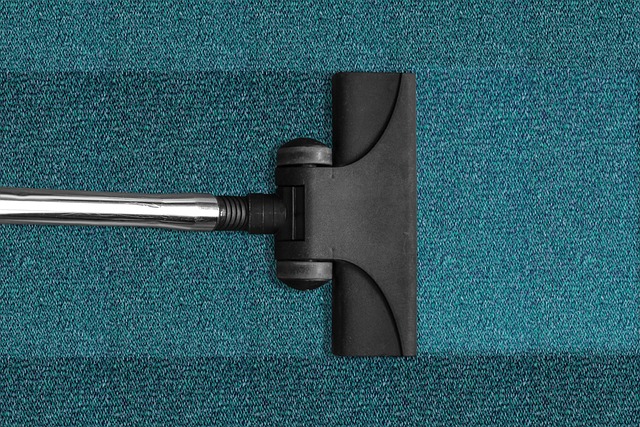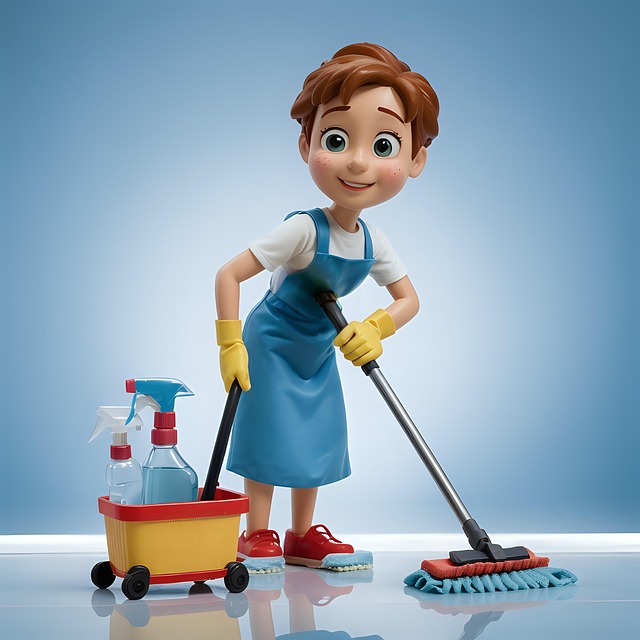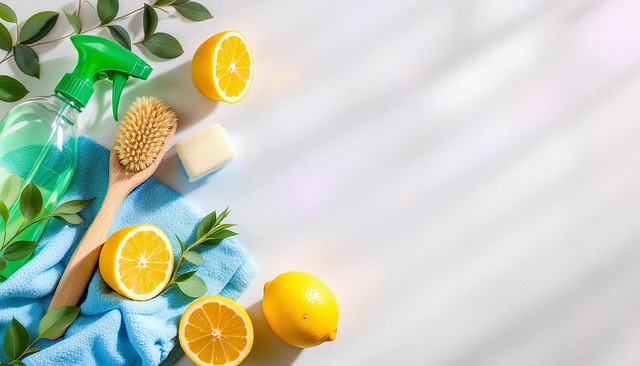Pet stains require immediate, tailored cleaning approaches for effective removal and carpet preservation. Action is key within minutes of occurrence. Understanding stain types (urine, fecal, blood, food) and carpet materials guides selection of appropriate pre-treatment methods and cleaning products. Enzyme-based cleaners break down stubborn urine and fecal odors. Blotting, scrubbing, and using specific solutions target different stains. Regular maintenance through vacuuming, damp mopping, and pet training minimizes future damage.
Keeping your carpet stain-free, especially with pets around, can seem like a daunting task. But fear not! This comprehensive guide is here to transform you into a pet stain-busting pro. From understanding the types and causes of common pet stains to discovering top cleaning products and effective methods, we’ve got you covered. Learn how to pre-treat, maintain, and restore your carpets to their spotless splendor, ensuring a fresh and odor-free environment for both you and your furry friends.
Understanding Pet Stains: Types and Causes

Pet stains can be a common concern for many homeowners, with various types and causes requiring specific attention during carpet cleaning. These stains often result from accidents or regular wear and tear, involving both liquid and solid debris. Urine stains, for instance, are common due to pet marking behavior, leaving behind a strong odor and potentially damaging the carpet if not addressed promptly. Solid fecal matter can also cause unsightly marks and create a breeding ground for bacteria if not cleaned thoroughly.
Different substances require unique cleaning approaches. Blood stains, while initially appearing solid, may absorb into the carpet fiber, necessitating immediate action to prevent setting. Food and drink spills, whether from water, juice, or other beverages, can range from light staining to complete saturation, depending on the type of liquid and the time taken to clean them up initially. Understanding these variations is crucial for effective pet stain cleaning, ensuring carpets are restored to their pristine condition without causing further damage.
The Impact of Pet Stains on Your Carpet

Pet stains can significantly impact the appearance and overall condition of your carpets. These spills, whether from urine, feces, or other pet-related accidents, can leave behind discolored patches that not only mar the aesthetics but also cause potential damage to the fibers. Over time, unresolved pet stains may lead to the deterioration of carpet material, reduced lifespan, and even mold growth if left untreated.
Effective pet stain cleaning is crucial in maintaining the hygiene and integrity of your carpets. Prompt action is key; the longer a stain remains, the harder it becomes to remove without leaving behind residual marks or odors. Professional cleaning services employ specialized techniques and products designed to tackle these stains effectively, ensuring that your carpets not only look as good as new but also remain healthy and free from unpleasant smells.
Pre-Treatment: Preparing for Effective Cleaning

Before diving into the cleaning process, preparation is key for effective pet stain removal. Pre-treatment involves addressing stains promptly to enhance the cleaning outcome. Start by blotting the affected area gently with a clean cloth or paper towel to absorb as much of the liquid or solid matter as possible. Avoid rubbing, as it can spread the stain further.
Next, identify the type of stain and choose an appropriate pre-treatment method. Common pet stains like urine, feces, or vomit require specific solutions. For example, applying a mixture of water and white vinegar to fresh urine stains can help neutralize odors and break down the stain’s composition before cleaning. Always test any solution on a small, inconspicuous area first to ensure it won’t damage the carpet fibers.
Choosing the Right Cleaning Method

When it comes to tackling pet stains, understanding your carpet’s material and fibre structure is key. Different fabrics absorb and retain dirt and moisture differently, so a one-size-fits-all approach won’t work. For example, nylon carpets are highly absorbent and quick to dry, making them easier to clean than dense wool or synthetic blends that can trap more moisture.
The right cleaning method depends on the type and severity of the pet stain. Blotting is effective for fresh spills, absorbing as much liquid as possible before it seeps deeper into the fibres. For older, dried-in stains, a combination of pre-treating with a suitable enzyme-based cleaner and then hot water extraction (also known as steam cleaning) will be more effective. This process uses high-pressure hot water to lift dirt and stain particles from the carpet fibres, leaving them clean and dry within hours.
Top Cleaning Products for Pet Stains

When it comes to tackling pet stains, the right cleaning products are essential for effective and fast results. Enlisting the aid of specialized pet stain cleaners is a game-changer, as these solutions are designed to break down and remove stubborn pet messes. Look for enzyme-based cleaners that contain natural ingredients, which not only work wonders on removing urine and fecal stains but also help prevent odours from returning.
Popular choices include carpet shampoos, sprays, and powders formulated with powerful cleaning agents and enzymatic properties. These products are safe for use on various carpet types and can be easily applied using a machine or by hand. Additionally, natural alternatives like baking soda and vinegar solutions are cost-effective and gentle on both your carpets and the environment, making them ideal for regular pet stain maintenance.
Step-by-Step Guide to Removing Common Pet Stains

Removing pet stains from carpets can seem like a daunting task, but with the right approach, it’s entirely manageable. Here’s a step-by-step guide to tackling common pet stains efficiently. First, identify the type of stain and the material of your carpet. Different stains require unique cleaning methods. For urine stains, blot the area immediately with paper towels or a clean cloth to absorb as much liquid as possible. Avoid rubbing, which can spread the stain further. Then, apply a pet stain remover or a mixture of white vinegar and warm water to the spot. Let it sit for several minutes, allowing the cleaning solution to penetrate the fibres.
Next, gently scrub the stained area with a soft-bristled brush or an old toothbrush. If the stain persists, rinse the spot with cold water to flush out any remaining cleaner. For solid or semi-solid pet messes like feces, act swiftly. Use gloves to pick up as much of the matter as you can. Afterwards, sprinkle baking soda or cornstarch over the affected region to absorb odours and prevent further spreading. Let it sit for 15-20 minutes, then vacuum thoroughly. For stubborn stains, repeat the cleaning process before considering deep carpet cleaning techniques like steam cleaning or enzymatic treatments.
Maintenance Tips to Prevent Future Stains

Regular maintenance is key in preventing pet stains from becoming a recurring issue. One effective tip is to establish a consistent cleaning routine, focusing on high-traffic areas where your pets spend the most time. These areas often accumulate dander, fur, and other debris that can lead to stubborn stains. Regular vacuuming with a HEPA filter can significantly reduce this build-up. Additionally, wiping down surfaces with a damp cloth or using pet-safe floor cleaners can help maintain a stain-free environment.
Training your pets to use designated areas for their needs is another powerful preventive measure. Providing them with easily cleanable litter boxes or outdoor spaces encourages good habits, making it simpler to manage any accidents that may occur. Remember, proactive cleaning and quick response to spills are essential in the battle against pet stains, ensuring a cleaner and more comfortable living space for both you and your furry companions.
